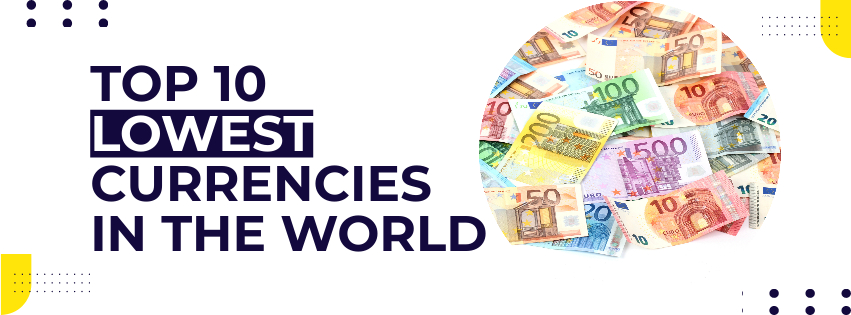In the vast and complex world of global finance, currencies play a crucial role in shaping economies. While high-valued currencies often grab headlines, those on the lower end of the spectrum are equally significant, reflecting various economic challenges and conditions. Here’s an insightful look into the ten lowest-valued currencies compared to the Indian Rupee as of April 2024.
Understanding Currency Valuation
Before diving into the list, it’s essential to understand that currency value is influenced by numerous factors including political stability, inflation rates, and economic policies. A lower currency value doesn’t necessarily indicate a poor economy but often highlights specific economic challenges or strategies.
The List: Currencies Weaker than the Indian Rupee
Let’s take a closer look at the ten currencies currently lagging behind the Indian Rupee, shedding light on the economic realities of each nation.
1. Iranian Rial (IRR)
- Value: 1 INR = 503.02 IRR
- Country: Iran
- Economic Insight: The Iranian Rial sits at the bottom of the global currency ladder, due to prolonged political unrest, impact from international sanctions, and economic isolation.
2. Vietnamese Dong (VND)
- Value: 1 INR = 304.11 VND
- Country: Vietnam
- Economic Insight: Despite transitioning towards a market economy, the Vietnamese Dong faces devaluation due to slow economic reforms and investorwariness.
3. Laotian Kip (LAK)
- Value: 1 INR = 254.46 LAK
- Country: Laos
- Economic Insight: The Kip’s modest valuation reflects its historical stability yet limited economic scale, mirroring a smaller-sized economy.
4. Sierra Leonean Leone (SLL)
- Value: 1 INR = 250.62 SLL
- Country: Sierra Leone
- Economic Insight: Sierra Leone struggles with high poverty levels and a historical political instability, impacting its currency value significantly.
5. Indonesian Rupiah (IDR)
- Value: 1 INR = 194.25 IDR
- Country: Indonesia
- Economic Insight: Indonesia’s reliance on commodity exports and volatile commodity prices significantly impacts the Rupiah’s devaluation.
6. Uzbekistani Som (UZS)
- Value: 1 INR = 151.54 UZS
- Country: Uzbekistan
- Economic Insight: Economic challenges exacerbated by the pandemic and slow industrial output contribute to the Som’s low valuation.
7. Guinean Franc (GNF)
- Value: 1 INR = 104.58 GNF
- Country: Guinea
- Economic Insight: Rampant corruption and political instability have led to a weakening of the Guinean Franc over the years.
8. Paraguayan Guarani (PYG)
- Value: 1 INR = 88.59 PYG
- Country: Paraguay
- Economic Insight: High inflation rates and economic challenges including high unemployment have impacted the Guarani’s value.
9. Ugandan Shilling (USH)
- Value: 1 INR = 45.88 USH
- Country: Uganda
- Economic Insight: Historical political turmoil and economic policies under past leaderships have kept the Shilling low valued.
10. Iraqi Dinar (IQD)
- Value: 1 INR = 15.67 IQD
- Country: Iraq
- Economic Insight: Political instability and historical conflicts have significantly affected the Dinar’s strength.
Factors Affecting Currency Values
To gain a comprehensive understanding of these valuations,it’s important to consider:
- Government Debt: High debt levels can lead to inflation which negatively impacts currency value.
- Political Stability: A stable political climate often attracts foreign investment, boosting currency strength.
- Inflation Rate: High inflation erodes purchasing power and lowers currency value.
- Recession: Economic downturns can deter foreign investment, impacting currency exchange rates.
Conclusion
The dynamics of currency values are complex and influenced by a myriad of factors ranging from internal economic policies to global geopolitical developments. While the currencies listed are among the lowest compared to the INR, they offer a deep insight into the socioeconomic challenges and opportunities within these nations.
For those interested in exploring more about global currencies and their impact on trade, investment, and economics, staying updated with reliable financial news sources is crucial. Such knowledge not only informs financial decisions but also fosters a deeper comprehension of global economic interdependencies.





